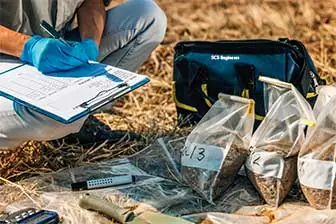

Developing our petroleum resources is complicated work, and unintended releases of crude, refined product, and produced waters can happen even when following best management practices. SCS works hand-in-hand with all the project stakeholders, including government regulatory agencies, to form a team committed to addressing environmental concerns and bringing the site back into agency compliance.

Every site requires an individual approach for investigations and affected soil and groundwater remediation. Our licensed geologists and engineers utilize the most appropriate industry-recognized methods, both historical and state-of-the-art, to evaluate and remediate the areas of concern identified at the site. SCS has set itself apart in the industry by integrating information technology from the beginning of a project to site closure.
Investigation methods can include:
Remediation methods can include:
A defining feature of SCS is adopting technology and techniques to improve efficiency during soil and groundwater investigations and monitoring. Using enterprise and proprietary geographic information system (GIS) software, our personnel can manage site data in near real-time from the field or office. These GIS tools allow data mapping in the field for data-based decision-making and are successfully used to save our clients’ potentially expensive remobilizations. With our client-advocate focus and extensive experience using risk-based approaches, institutional/engineering controls, and site redevelopment, SCS handles challenging petroleum remediation projects and maintains a strong track record of managing projects from initial release identification to site closure, taking on existing challenges and bringing them to successful conclusions. Our teams have experience achieving regulatory closure through a variety of procedures, including:
With our specialized practices, SCS is a turn-key provider of petroleum environmental remediation services and ready to meet your project’s challenges and goals head-on, from initial investigation and permitting to remediation and final environmental closure.